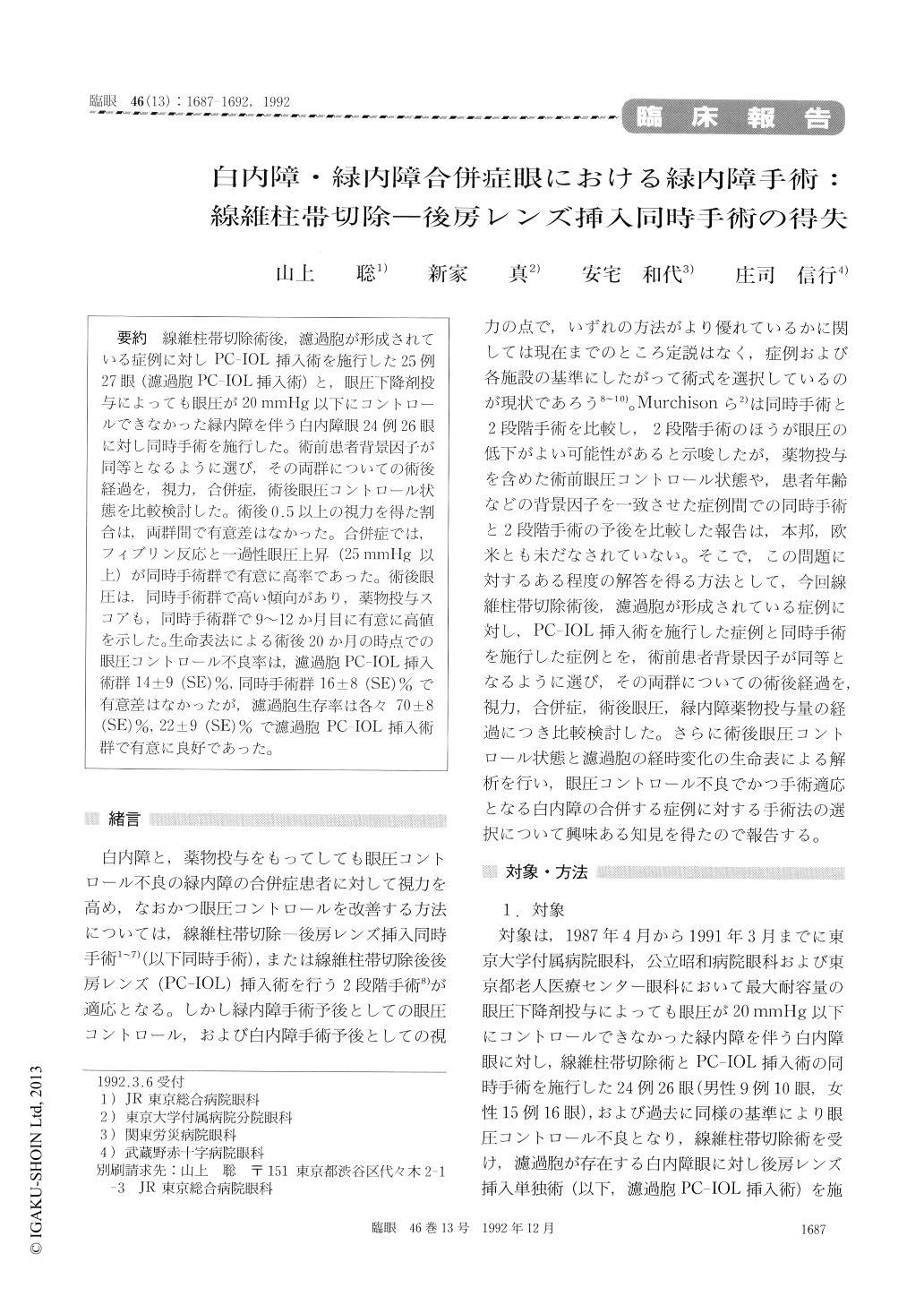Japanese
English
- 有料閲覧
- Abstract 文献概要
- 1ページ目 Look Inside
線維柱帯切除術後,濾過胞が形成されている症例に対しPC-IOL挿入術を施行した25例27眼(濾過胞PC-IOL挿入術)と,眼圧下降剤投与によっても眼圧が20mmHg以下にコントロールできなかった緑内障を伴う白内障眼24例26眼に対し同時手術を施行した。術前患者背景因子が同等となるように選び,その両群についての術後経過を,視力,合併症,術後眼圧コントロール状態を比較検討した。術後0.5以上の視力を得た割合は,両群間で有意差はなかった。合併症では,フィブリン反応と一過性眼圧上昇(25mmHg以上)が同時手術群で有意に高率であった。術後眼圧は,同時手術群で高い傾向があり,薬物投与スコアも,同時手術群で9〜12か月目に有意に高値を示した。生命表法による術後20か月の時点での眼圧コントロール不良率は,濾過胞PC-IOL挿入術群14±9(SE)%,同時手術群16±8(SE)%で有意差はなかったが,濾過胞生存率は各々70±8(SE)%,22±9(SE)%で濾過胞PC-IOL挿入術群で有意に良好であった。
We treated 27 eyes with cataract and previously treated glaucoma with filtering bleb by posterior chamber lens implantation (PC-IOL). Another series of 26 eyes with cataract and medically un-controlled glaucoma was treated by simultaneous trabeculectomy and PC-IOL implantation. There was no significant difference in the patients' back-ground between both groups.
Postoperative visual acuity of 0.5 or better was obtained in 48% of eyes in the former group and in 65% in the latter. The incidence of fibrin formation and IOP spike of 25 mmHg or more was significant-ly less frequent in the former group than in the latter (p <0.01 and p<0.05). The control of IOP was regarded as failure when the postoperative IOP consistently exceeded 20 mmHg with medication. The probability of unsuccessful IOP control as calculated by the life-table method of Kaplan -Meier was 14±9% for the former group and 16±8% for the latter at 20 months. Significant less medication was required at 9 to 12 months in the former group and the IOP level tended to be lower throughout the follow-up period. Cumulative sur-vival probability of filtering bleb was 70±8 for the former group and 22±9 for the latter. The differ-ence was significant (p <0.05).

Copyright © 1992, Igaku-Shoin Ltd. All rights reserved.


